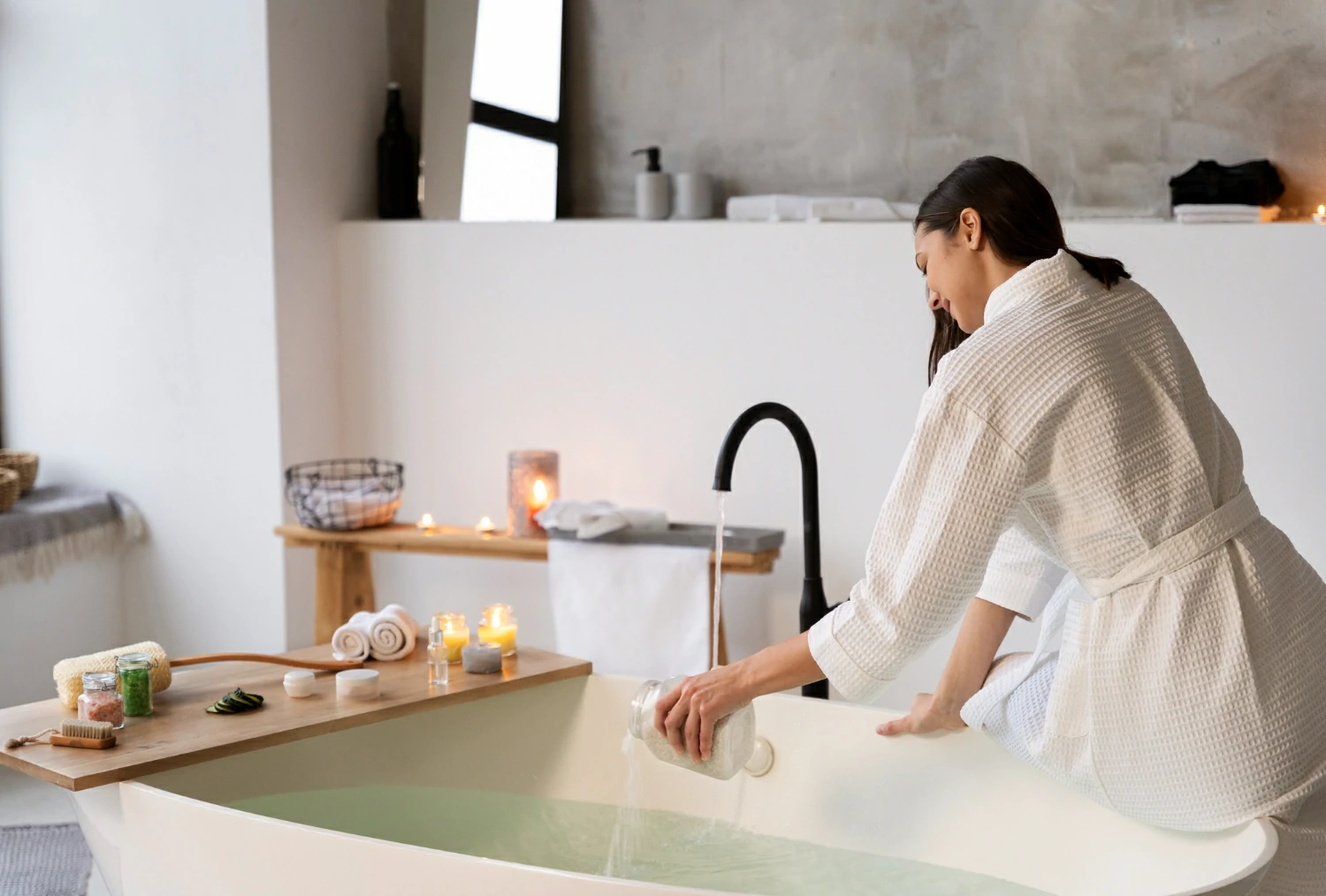How to clean a jacuzzi tub? Answer is – Cleaning a jacuzzi tub involves a few simple steps. First, flush out the system with clean water. Then fill the tub with hot water, add cleaning agents like dish soap and vinegar, and run the jets. Scrub any grime, refill the tub with clean water, run the jets again, and finally wipe it down. Regular cleaning will keep your jacuzzi sanitary and enjoyable.
Summary
- A jacuzzi tub requires regular cleaning to prevent buildup of soap scum, mold, mildew, and bacteria in the jets and internal plumbing.
- Cleaning can be done with household products like dish soap, vinegar, and baking soda.
- A dedicated jacuzzi cleaner can be used for heavy-duty cleaning tasks.
- Regular cleaning extends the lifespan of your tub.
How to Clean a Jacuzzi Tub
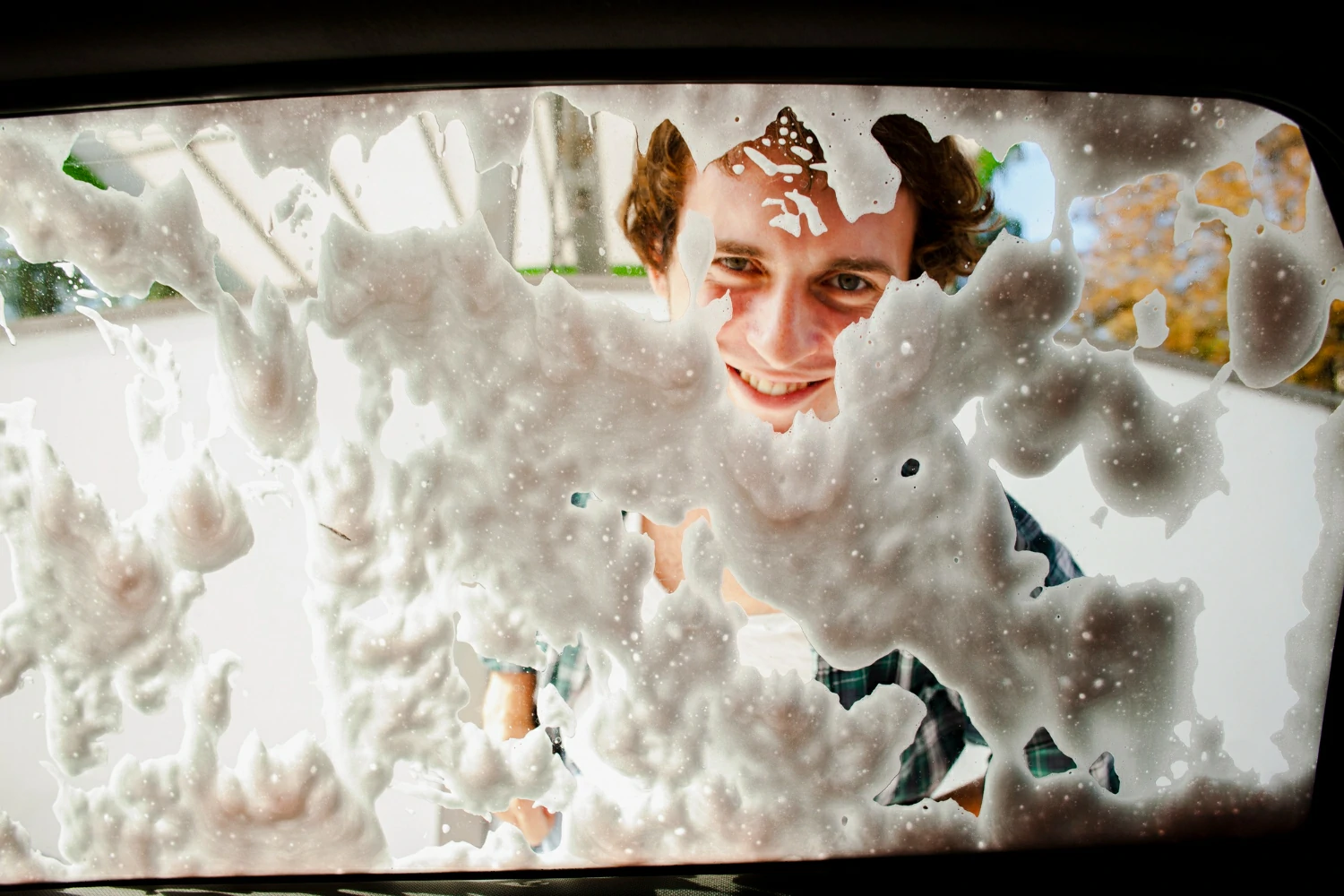
What is a jacuzzi tub?
A jacuzzi tub, often referred to as a hot tub or whirlpool bath, is a large bath designed for relaxation and sometimes hydrotherapy. What sets a jacuzzi apart from a regular bathtub are the powerful jets strategically placed within the tub.
These jets circulate water at high speeds, creating a massaging effect and a signature bubbling or churning sensation within the water. Jacuzzis are available in a variety of sizes and can be installed both indoors and outdoors.
Why is it important to clean a jacuzzi tub?
While a jacuzzi tub provides a luxurious and soothing experience, it’s crucial to maintain proper cleaning practices. Here’s why:
Hygiene and Health: Warm, moist environments are ideal breeding grounds for bacteria, mold, and mildew. Without regular cleaning, these microorganisms can multiply within the jacuzzi’s jets, internal plumbing, and on its surfaces. This can lead to skin irritations, infections, and unpleasant odors.
Equipment Longevity: A buildup of soap residue, body oils, hair, and other debris can clog jets and internal plumbing. This not only compromises the jacuzzi’s performance but can also lead to costly damage and reduce the lifespan of your equipment.
Aesthetics and Enjoyment: Nobody wants to soak in a tub with cloudy water, visible grime, or strange smells. A clean and well-maintained jacuzzi is far more inviting and contributes to a truly relaxing experience.
Sarah McAdams Expert Opinion
“Regular jacuzzi cleaning isn’t just about aesthetics; it’s essential for protecting your health and the investment you’ve made in your tub. Simple cleaning routines make a world of difference.” – Sarah McAdams, Certified Pool & Spa Operator (CPO)
What Does It Mean to Clean a Jacuzzi Tub?
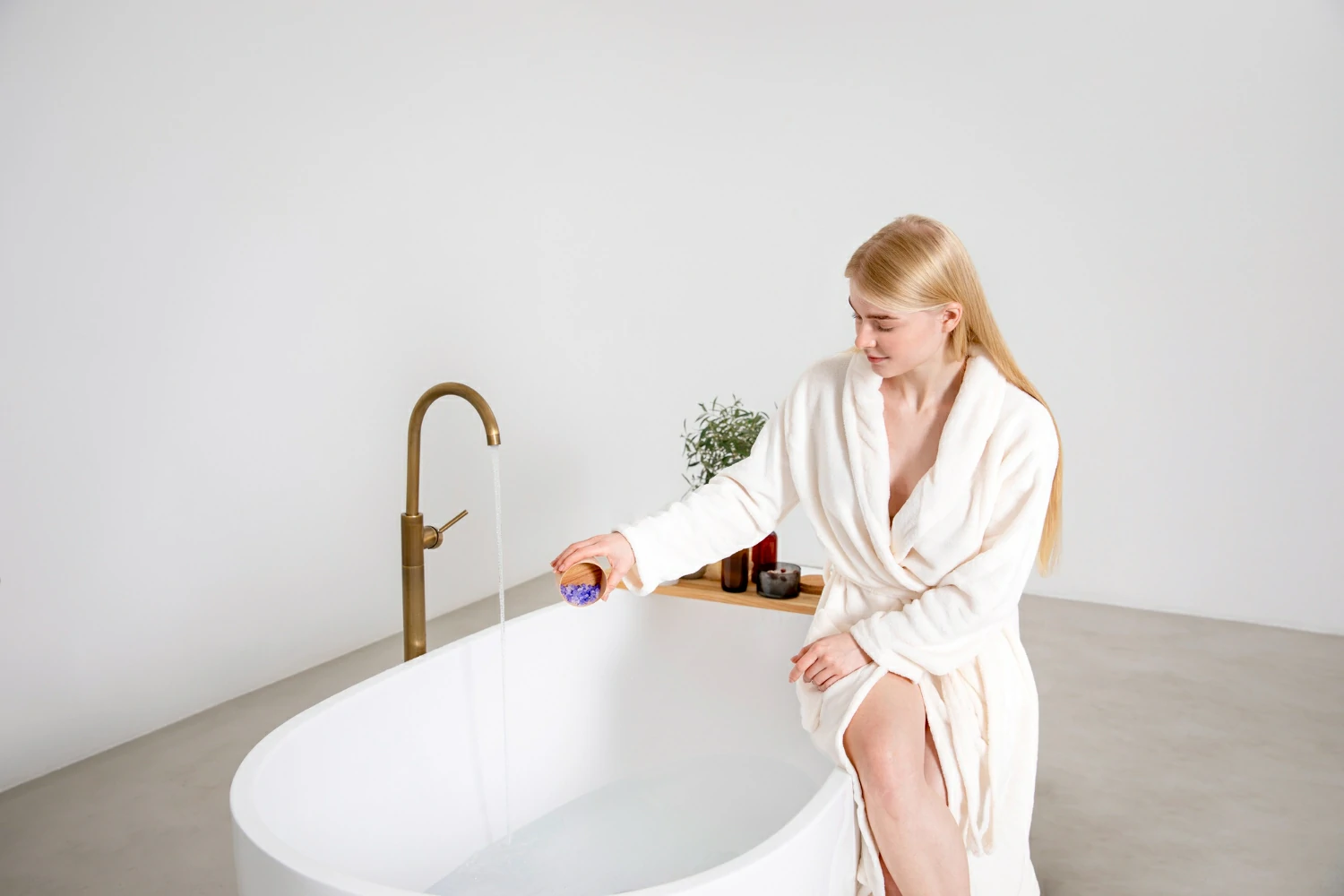
A comprehensive jacuzzi cleaning goes beyond simply making the tub look presentable. It encompasses three crucial elements:
1. Removing visible dirt and debris
Surface Scum: Bath products, body oils, dead skin cells, and other organic matter can accumulate on the tub’s surface, creating a greasy film or a ring around the waterline. This needs to be scrubbed and wiped down thoroughly.
Hair and Debris: Jacuzzi jets often trap hair, lint, or other small debris. These need to be manually removed to prevent clogging and maintain a clear, inviting appearance of the water.
2. Cleaning internal plumbing lines (jets)
Biofilm Buildup: The primary concern lies within the jacuzzi’s jets and plumbing lines. Biofilm, a slimy layer formed by bacteria, adheres to the interior surfaces of the pipes. This becomes a breeding ground for various microorganisms.
Mineral Deposits: Depending on your water source, mineral deposits from hard water can build up within the plumbing, reducing jet effectiveness and potentially leading to equipment issues.
Circulating Cleaning Solution: Running your jacuzzi jets with dedicated cleaning solutions helps break down biofilm, loosen debris, and flush out contaminants from the plumbing system.
3. Sanitizing to eliminate bacteria and mold
Killing Microorganisms: While cleaning solutions help remove grime and buildup, a crucial step is sanitization. This involves using appropriate chemicals (like chlorine or bromine) to actually kill bacteria, mold, and other potentially harmful microorganisms.
Proper Water Chemistry: Maintaining balanced water chemistry, including pH levels and sanitizer concentrations, is vital for ongoing sanitization and preventing an environment conducive to microorganism growth. You can find more information on hot tub water chemistry here: Centers for Disease Control and Prevention (CDC) Healthy Swimming site.
Tom Harrison Expert Opinion
“Think of your jacuzzi’s plumbing as a hidden network. While you might have a sparkling tub surface, a buildup of biofilm within the jets can compromise water quality and create a health hazard – even if the water looks clear!” – Tom Harrison, Owner, Pool & Spa Care Specialists.
How Often Should you Clean a Jacuzzi Tub?
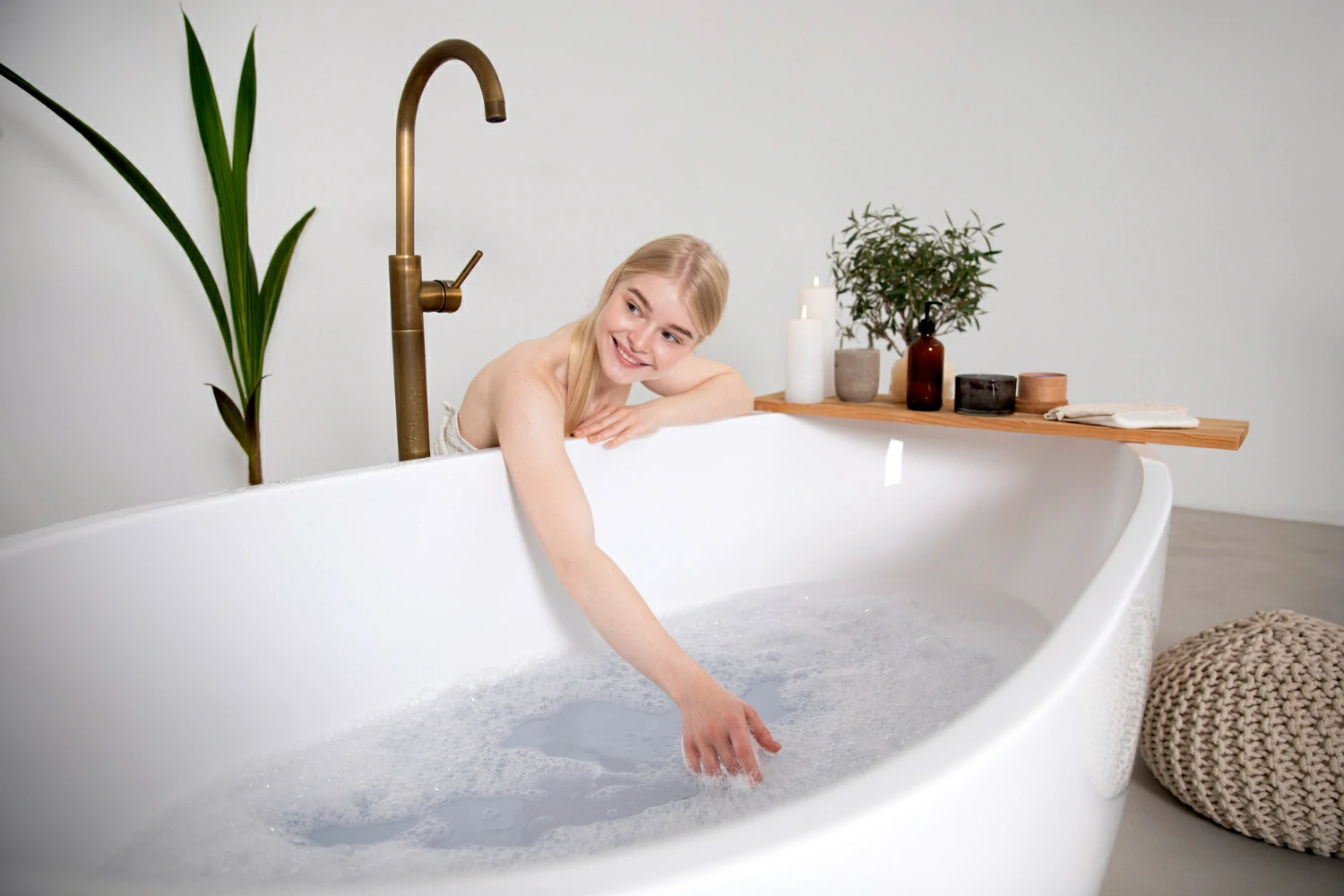
Here’s a breakdown of recommended cleaning practices:
1. Light Cleaning After Each Use
Quick Rinse: Drain the tub and use clean water to rinse down the inside surfaces. This helps remove residue from bath products, body oils, and any debris that may have been introduced while soaking.
Wipe Down: Dry the visible surfaces of the tub with a clean towel or microfiber cloth. This prevents water spots, mineral deposits, and soap scum from building up.
Check the Filter: A simple visual inspection of your jacuzzi’s filter cartridge is a good habit. Remove any large debris like leaves or hair that might have been caught. More thorough filter cleaning should be part of your deeper cleaning routine.
2. Deep Cleaning Schedule (Weekly, Biweekly, Monthly)
The frequency of deep cleaning depends on how heavily you use your jacuzzi tub:
Heavy Use (multiple times per week): Aim for a deep clean at least weekly. This is especially important if you frequently use the tub with other people.
Moderate Use (1-2 times per week): You can likely get away with a deep clean every other week (biweekly).
Infrequent Use (less than once a week): A monthly deep cleaning schedule should suffice to prevent major buildup and keep your tub in good condition.
What Does Deep Cleaning Involve?
Deep cleaning your jacuzzi includes the following steps:
- Flushing the System: Run the jets with clean water for several minutes to loosen any debris within the plumbing lines.
- Adding Cleaning Solution: Use dish soap, vinegar, or a specialized jacuzzi tub cleaner according to product instructions.
- Running the Jets: Circulate the cleaning solution through the jets for a designated amount of time (usually 15-20 minutes).
- Scrubbing: Address any stubborn stains with a soft-bristled brush or sponge.
- Drain and Rinse: Thoroughly rinse the tub to remove dirty water and cleaning residue.
- Refill and Cycle: Run the jets again with clean water to flush out any remaining cleaning solution.
- Sanitize: Balance the water chemistry and add the appropriate amount of sanitizer (chlorine, bromine, etc.).
Expert Tip: “Don’t neglect your filters! Regular filter cleaning and replacement are essential for maintaining water clarity and extending the lifespan of your jacuzzi equipment.” – Jennifer Davis, Certified Pool & Spa Technician
Tools and Supplies Needed
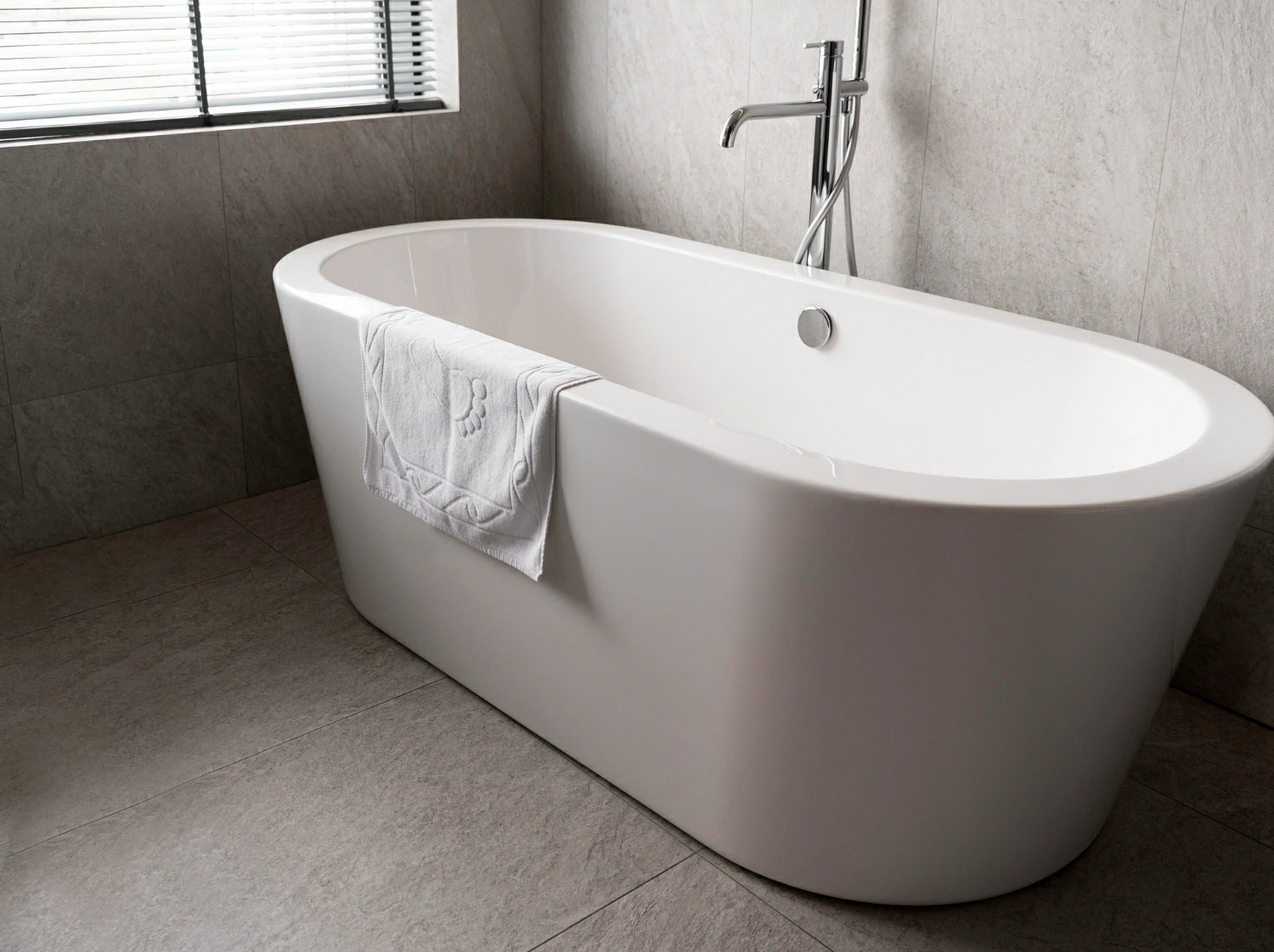
Here’s a breakdown of what you’ll want on hand for cleaning your jacuzzi:
1. Essential Cleaning Agents
Dish Soap: Mild dish soap cuts through grease, body oils, and bath product residue. It’s gentle on the tub’s surface and effective at cleaning both the exterior and the internal plumbing. Choose a basic formula without harsh additives or fragrances.
White Vinegar: A natural, multi-purpose cleaning solution, white vinegar helps dissolve soap scum, combat mild mold and mildew, and tackle mineral deposits from hard water. Its acidity makes it a good sanitizing option in certain cases.
Baking Soda: This gentle abrasive is perfect for creating a cleaning paste to address stubborn stains and grime. Baking soda is also a natural deodorizer.
2. Cleaning Implements
Soft-bristled Scrub Brush or Sponge: Avoid abrasive scrubbers that could scratch your jacuzzi’s finish. A soft brush is ideal for loosening grime and getting into crevices, while a non-scratch sponge works well for larger surfaces.
Microfiber Towels: These soft, absorbent towels are excellent for wiping down the tub, preventing water spots, and leaving a lint-free finish.
3. Optional But Useful
Jacuzzi Tub Cleaner: Commercial cleaners specifically formulated for hot tubs are available. These often combine cleaning agents with enzymes that target biofilm buildup within the plumbing lines. You can find jacuzzi cleaners at pool supply stores or online. Follow the directions on the product carefully.
Telescoping Cleaning Brush: If your jacuzzi is large, a telescoping brush with soft bristles can make it easier to reach all interior surfaces, especially for a deep cleaning.
Small Cleaning Tools: Q-tips, cotton swabs, or an old toothbrush can be helpful for getting into tight spaces and around the jets.
Expert Tip: “Always have a few clean microfiber cloths on hand for your jacuzzi. Use them to quickly wipe down wet surfaces around the tub to prevent water spotting and maintain a polished appearance.” – Mark Anderson, Owner, SpaShine Cleaning Services
Step-by-Step Guide to Cleaning Your Jacuzzi Tub

Before You Begin
Consult Your Manual: Always refer to your jacuzzi’s owner’s manual for specific cleaning instructions and any product recommendations or warnings.
Gather Supplies: Have your chosen cleaning agents, brushes, microfiber cloths, and any other necessary tools ready.
Turn Off Power: Safety first! Ensure the power to your jacuzzi is turned off at the breaker to prevent the jets or pump from accidentally activating during the cleaning process.
1. Flush the System
Remove the Filter(s): Take out the cartridge filter and set it aside for cleaning later (this will be a separate process).
Run Jets: Fill the tub with clean, cool water and run the jets for several minutes. This will help loosen any debris lodged within the plumbing lines.
Drain: Drain the tub completely.
2. Fill with Hot Water and Cleaning Agents
Fill the Tub: Fill the hot tub with hot water, ensuring the water covers all jets by at least a few inches. Hot water helps dissolve grime and opens the pores of the tub surface for better cleaning.
Add Cleaning Agents:
- Basic Cleaning: Add a few tablespoons of dish soap and about a cup of white vinegar to the water.
- Deeper Cleaning: For a deeper clean, you can also use a specialized jacuzzi cleaner according to the product’s instructions.
3. Run the Jets
Circulate Solution: Run the jets for 15-20 minutes. Don’t activate any air intake features as this may create excessive foam. This process circulates the cleaning solution through the entire internal plumbing system, dislodging biofilm and dirt.
4. Scrub as Needed
Address Problem Areas: While the jets are running, use your soft-bristled brush or sponge to tackle any visible grime or stains on the tub’s surface. Pay special attention to the waterline, areas around the jets, and any nooks and crannies.
Baking Soda Paste: For stubborn spots, create a paste of baking soda and water. Apply it to the affected area and let it sit for a few minutes before gently scrubbing.
5. Drain and Rinse
Drain: Drain the dirty water from the tub.
Rinse Thoroughly: Refill the tub with clean, cool water and run the jets for a few minutes to rinse away any remaining soap residue or loosened dirt. Drain the tub again.
6. Refill and Run Jets Again
Final Flush: Fill the tub with clean water and run the jets for another 10-15 minutes. This ensures that all traces of cleaning agents have been thoroughly flushed from the internal plumbing.
7. Wipe Down and Dry
Remove Excess Moisture: Thoroughly wipe down all surfaces of the jacuzzi tub with clean microfiber towels. This prevents water spots and leaves your tub sparkling.
Clean and Reinstall Filter: Follow the manufacturer’s instructions for cleaning and reinstalling your filter cartridge.
- Expert Tip “If you notice cloudy water or an unpleasant odor even after cleaning, it might be time to ‘shock’ your jacuzzi with a higher dose of sanitizer to address any lingering bacteria.”- Sarah Ellis, Pool & Spa Technician
Notes
- For extra cleaning power, you can repeat the cleaning solution steps (Steps 2-3) twice.
- Always clean the jacuzzi cover regularly to prevent debris and contaminants from entering your tub.
- If your jacuzzi has been unused for a long period, consult a professional for a deep cleaning and sanitizing service before use.
How to Maintain a Clean Jacuzzi Tub

1. Quick Rinses and Wipe-Downs After Use
- Rinse Away Residue: Take a minute after each soak to drain your tub and rinse the surfaces with clean water. This washes away soap, body products, and any debris left behind.
- Quick Wipe: Use a microfiber cloth to quickly dry the tub’s surfaces. This minimizes hard water stains, soap scum buildup, and gives your jacuzzi a freshly-cleaned look.
Why It Matters: This simple step reduces the amount of grime that embeds itself into the tub’s surface and circulates within the jets, making your deep cleaning sessions less arduous and more effective.
2. Regular Deep Cleaning Schedule
- Consistency Is Key: Establish a cleaning schedule based on your jacuzzi usage. Weekly, biweekly, or monthly – set a realistic routine and stick to it.
- Refer to Previous Step: Use the in-depth cleaning guide outlined earlier in this article as your go-to method each time you perform a deep clean.
Why It Matters: Regular deep cleaning is non-negotiable. It combats bacteria, eliminates biofilm buildup within the plumbing, and prevents unsightly (and potentially unhygienic) conditions from developing.
3. Using Proper Water Chemistry
- Test Kits Are Your Friend: Invest in a reliable water testing kit for hot tubs. You’ll be measuring things like pH levels, alkalinity, and sanitizer concentrations (either chlorine or bromine are most common). You can purchase these kits at pool supply stores or online.
- Balancing Act: Follow the kit’s directions and learn the ideal ranges for your specific hot tub. Regularly test your water and add the necessary chemicals to keep the parameters within those optimal ranges.
- Sanitizer Shock: Periodically shocking your jacuzzi with a higher dose of your chosen sanitizer gives the water a powerful “reset” and helps combat stubborn bacteria or cloudy water issues.
Why It Matters: Proper water chemistry isn’t just about sanitation – although that’s crucial! It also helps protect your jacuzzi’s equipment from corrosion and keeps your water crystal clear. Balanced water is easier to maintain and creates a more pleasant soaking experience.
Tom Evans Expert Opinion
“Think of water chemistry maintenance as preventative medicine for your jacuzzi. A few minutes of testing and adjusting each week save you headaches, costly repairs, and keep your tub healthy and inviting.” – Tom Evans, Certified Pool & Spa Operator (CPO)
Maintenance Tips
- Filter Care: Clean your filter cartridges according to the manufacturer’s instructions. Dirty filters restrict water flow, strain your equipment, and reduce cleaning efficacy. Replace your filters as recommended.
- Cover Up: Keep your jacuzzi covered when not in use. This minimizes debris entering the water and helps the water retain heat, lowering your energy costs.
- Shower Before Soaking: A quick rinse before you get in the jacuzzi can dramatically reduce the amount of body oils, lotions, and other contaminants introduced into the water.
Troubleshooting Cleaning Problems

1. Persistent Stains
Identifying the Culprit: Knowing what kind of stain you’re dealing with helps determine the best removal approach. Here are some common types:
- Organic Stains: Body oils, lotions, makeup, etc., often appear greasy or yellowish.
- Mineral Stains: Brownish or reddish stains may indicate iron or other minerals from your water source.
- Biofilm Stains: May be grayish, slimy, or a combination of mineral and organic material.
Targeted Treatment
- Enzyme Cleaners: Jacuzzi cleaners with enzymes are excellent for breaking down organic stains.
- Metal Stain Removers: Commercial products specifically designed for metal stains work if mineral deposits are the issue. Follow product instructions carefully.
- Repeated Deep Cleaning: For stubborn biofilm stains, sometimes repeated cycles of cleaning, as outlined in our earlier guide, are necessary to fully address the problem.
Prevention is Key: Regular cleaning, rinsing after use, and balanced water chemistry help minimize the occurrence and severity of tougher stains.
2. Odors
Beyond Dirty: An unpleasant odor from your jacuzzi isn’t always just a matter of visible dirt. Biofilm buildup within the plumbing is a frequent offender.
Deep Cleaning and Shocking: A thorough cleaning with a focus on circulating your solution through the jets, followed by shocking the water with a higher dose of sanitizer, is often the solution.
Plumbing Purge Products: Commercial products designed to purge biofilm from plumbing lines are available at pool supply stores. Use these according to the product instructions if the odor persists despite cleaning and shocking.
Expert Tip “If you can detect a ‘musty’ smell near your jets when they’re running, that’s a pretty clear sign of biofilm buildup. Don’t just mask the odor; take steps to break down the biofilm with repeated cleaning and sanitization.” – Lisa Nguyen, Pool & Spa Care Specialist
3. Mold and Mildew
Spotting the Signs: Black, green, or slimy patches on your tub’s surface or around jets may indicate mold or mildew. These are more likely to occur in damp areas that aren’t fully cleaned and dried.
Tackling the Problem:
- Dilution Isn’t the Solution: While vinegar is helpful for basic cleaning, it’s not always a strong enough disinfectant for substantial mold or mildew.
- Bleach Solution: Carefully create a diluted bleach solution (check your owner’s manual for compatibility). Apply to the affected areas, let it sit for several minutes, scrub, and rinse extremely thoroughly.
- Tea Tree Oil: A few drops of tea tree oil added to your regular cleaning routine can help prevent future mold growth due to its natural antifungal properties.
Safety First: Wear gloves and ensure good ventilation when working with bleach. Never mix bleach with other cleaning chemicals, as hazardous fumes can form.
Conclusion
Maintaining a sparkling clean jacuzzi may seem like an extra chore, but the benefits far outweigh the effort. Not only do you protect your investment and ensure your tub’s longevity, but you also create a far more inviting and healthy environment for relaxation and enjoyment.
Here’s a recap of the key takeaways:
- Jacuzzi Cleaning Goes Beyond the Surface: Cleaning involves removing surface grime, sanitizing, and flushing out contaminants from the internal plumbing lines.
- Regularity Matters: Consistent rinsing, light cleaning after each use, and a dedicated deep cleaning schedule tailored to your usage will keep your jacuzzi in top condition.
- Household Products Can Be Effective: Dish soap, vinegar, and baking soda are surprisingly powerful for basic cleaning. Specialized jacuzzi cleaners provide added power for tougher jobs.
- Water Chemistry is Key: Maintaining balanced water chemistry helps prevent problems, protects your equipment, and enhances your soaking experience.
- Don’t Ignore Problems: Address persistent stains, odors, or mold promptly to avoid worsening conditions and the need for more extensive solutions.
FAQs
Q: How often should I change the water in my jacuzzi tub?
The frequency of water changes depends on how heavily you use your tub and how well you maintain water chemistry. Generally, a full drain and refill is recommended every 3-4 months. Some users may extend this timeframe with excellent water maintenance.
Q: Can I use regular laundry detergent to clean my jacuzzi?
No. Laundry detergent is too harsh and will create excessive foaming. Stick to dish soap or a product specially designed for hot tubs.
Q: Is bleach safe to use in a jacuzzi tub?
Diluted bleach can be used as a disinfectant in some cases. However, it’s essential to check your jacuzzi owner’s manual for compatibility and proper dilution ratios. Never use undiluted bleach and rinse extremely thoroughly.
Q: My jacuzzi has a funky smell even after cleaning. What should I do?
A persistent odor often indicates biofilm within the pipes. Try additional rounds of deep cleaning with a focus on jet circulation time. A plumbing purge product and ‘shocking’ the water may be necessary.
Q: Where can I find reliable jacuzzi cleaning products?
Pool supply stores, major online retailers, and some home improvement stores carry a range of cleaning products designed for hot tubs and spas.
